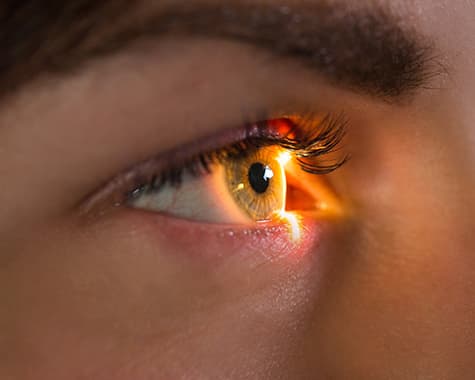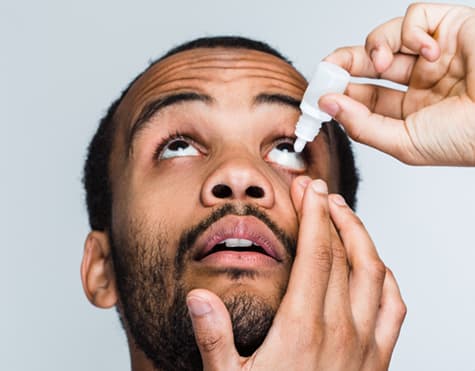 Glaucoma is a group of eye conditions where pressure on the optic nerve leads to vision loss. Glaucoma affects both eyes, although one eye may be much worse than the other.
Glaucoma is a group of eye conditions where pressure on the optic nerve leads to vision loss. Glaucoma affects both eyes, although one eye may be much worse than the other.
As it is a group of eye conditions, there are several kinds of glaucoma.
The most common kind of glaucoma is open-angle glaucoma. With open-angle glaucoma, it occurs when drainage canals become clogged.
This results in an increase in eye pressure. It takes time to develop, and often has no discernible symptoms until vision loss.
The second most common kind of glaucoma is angle-closure glaucoma. With angle-closure, it occurs because of blocked drainage canals.
This leads to a sudden increase in intraocular pressure. Unlike open-angle glaucoma, it develops quickly and has noticeable symptoms. If someone has it, they should seek medical attention, as it’s a medical emergency.
Other, less common kinds of glaucoma include:
- Normal-Tension Glaucoma
- Congenital Glaucoma
- Secondary Glaucoma
- Pigmentary Glaucoma
- Pseudo Exfoliative Glaucoma
- Traumatic Glaucoma
- Neovascular glaucoma
- Irido Corneal Endothelial Syndrome
- Uveitic Glaucoma
What is Glaucoma?
Glaucoma is often a genetic condition. If you have a family history of it, you are more at risk of developing glaucoma. Genetics are not the only way you can develop glaucoma.
Conditions like type 2 diabetes can also contribute to the development of glaucoma. This can occur even if you have no family history of glaucoma.
Symptoms tend to not show up until years later. The solution is to get annual screenings and eye exams. At Huffman & Huffman, P.S.C., we offer several treatment options for glaucoma.
With a condition like glaucoma, it’s important to control disease progression early. This is the only way to preserve your existing vision.
Once you lose vision to glaucoma, it’s gone for good. These treatments include eye drops, SLT, MIGS, and iStent.
Below is a basic definition of each treatment. You and your eye doctor will discuss more in-depth during your visit:
Eye drops
 Eye drops can be the first line of treatment to help lower the pressure in your eyes. These prescription eye drops work in one of two ways.
Eye drops can be the first line of treatment to help lower the pressure in your eyes. These prescription eye drops work in one of two ways.
They either reduce fluid formation, or by increasing the eye’s ability to drain.
SLT: Selective Laser Trabeculoplasty
SLT or ‘selective laser trabeculoplasty’ aims to reduce intraocular pressure. SLT is likely the next step in open-angle glaucoma treatment if eye drops don’t help.
SLT uses laser energy on selective areas of drainage tissue in the eye. This encourages a chemical and biological change, eventually resulting in better drainage.
It can take up to three months to achieve the desired effects, and the results generally last up to five years. Because SLT uses a ‘cold laser,’ the procedure causes less scar tissue. As a result, it also has a minimal recovery time.
MIGS: Minimally Invasive Glaucoma Surgery
MIGS or minimally invasive glaucoma surgery is not a specific procedure. Rather, it is a blanket term for several minimally invasive procedures.
These procedures use microscopic equipment and incisions. They achieve the same effects as more invasive surgeries like a trabeculectomy.
They can do this with fewer potential complications. As with all glaucoma procedures, the goal with MIGS is to reduce intraocular pressure.
iStent
iStent is a MIGS (minimally invasive glaucoma surgery) procedure. The iStent creates two microscopic incisions to create permanent bypasses. These are done through the primary blockage points in your eye and allow for drainage.
One of the unique advantages of iStent is that it can be performed at the same time as cataract surgery. This is an attractive option for people who suffer from both cataracts and glaucoma.
Are you or a loved one searching for glaucoma treatment options? Huffman & Huffman, P.S.C. can help! Our expert ophthalmologists will come up with a custom glaucoma treatment plan.
Schedule an appointment at Huffman & Huffman, P.S.C. today!
